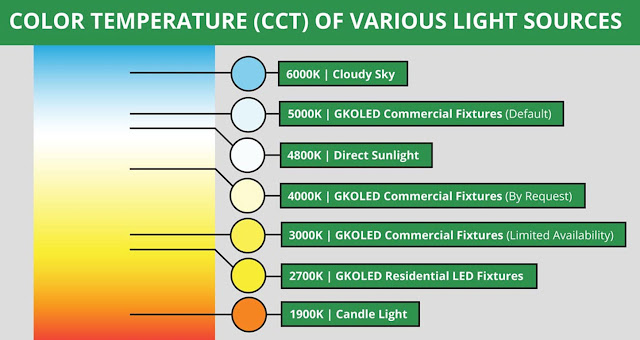Choose the Suitable Color Temperature for Your Project
Perfect lighting means achieving the higher lumens per wattage. While energy efficiency is a crucial factor, an unappealing color temperature or light quality will neutralize the advantages of energy efficiency. For example, a high brightness LED source with a blue-white color temperature generally consumes less energy than a warmer white, but that isn’t always the first choice. Instead, people prefer lights that offer both ambiance and energy savings.
Many people make these mistakes by opting for LED flood lights with harsh and blue-white color temperatures. On the other hand, residents having a habit of warmer shade lights usually don’t like the sudden change in color temperatures. Therefore, it is essential to have the proper knowledge of color temperature.
With different color temperatures, you can change the ambiance of your place. It is measured in Kelvin. The transition from a warm to a white or blue light increases as the color temperature increases. A temperature of 6500K or more will offer blue lighting similar to the sky. A 3500K or lower color temperature is considered warmer, equal to candlelight. Choose a color temperature between 4100K and 5500K if you are looking for naturally white or natural daylight.
Ambient Color Temperatures
Color temperatures are associated with moods or settings. High color temperatures are used at hospitals or offices and can be seen as clean, harsh, or cold. Lower color temperatures are used for personal lighting. LED lights offer great ambient color temperatures.
Electrical contractors and property managers should consider kelvin temperature while choosing bulbs for various locations. For example, warm lights(low Kelvin temperatures) are used for intimate settings, while retail spaces or areas with sharp light requirements can use high kelvin temperatures.
Indoor and Outdoor Color Temperature
Selecting the most suitable color temperature depends on the space. Whether you need a clear blue shade light, or a warmer shade similar to a sunset or sunrise, choose the perfect color temperature for your application depending on the space and preferences. The creative and appealing ambiance is mainly a primary target for indoor applications such as restaurants, living spaces, and hotels. Cool color temperatures are famous for storefronts, outdoors, sports, warehouses, and other locations requiring a crisp, bright light. LED flood lights are the most popular outdoor lighting fixture that offers an effective color temperature to illuminate the darkness.
People often plan to upgrade their color temperature light with LED fixtures. Light technology such as high-pressure sodium offers a yellow light with a 2200K color temperature. These people are generally happy with the color temperature but want the LED lights benefits, such as energy efficiency and lower maintenance costs. Modern LED technology can provide various color temperature lights.
Conclusion
The LED lighting fixtures can offer both energy savings and color temperature. But there are various types of LED fixtures for all locations, so choosing an appropriate color temperature is essential for a comfortable and good lighting experience. LED flood lights come in various Kevin temperatures to fulfill all the needs at lower energy consumption. This is the most important decision you must make before finalizing your lighting fixture. If you are still confused about it, we suggest talking with a professional to understand color temperatures better.







Comments
Post a Comment